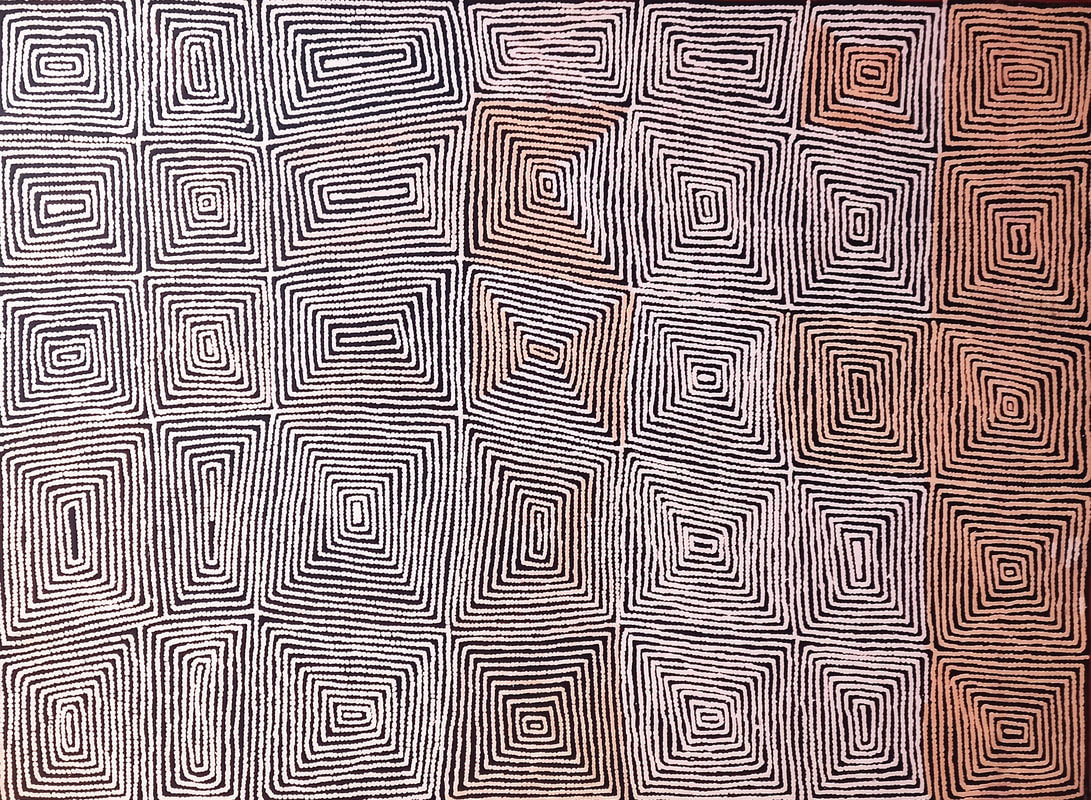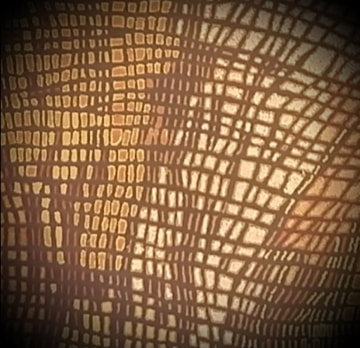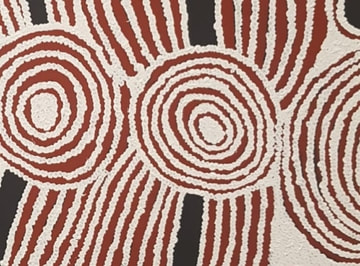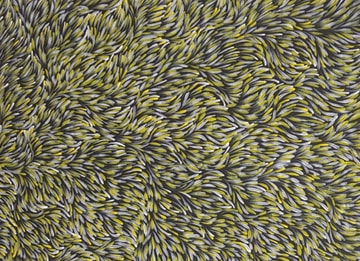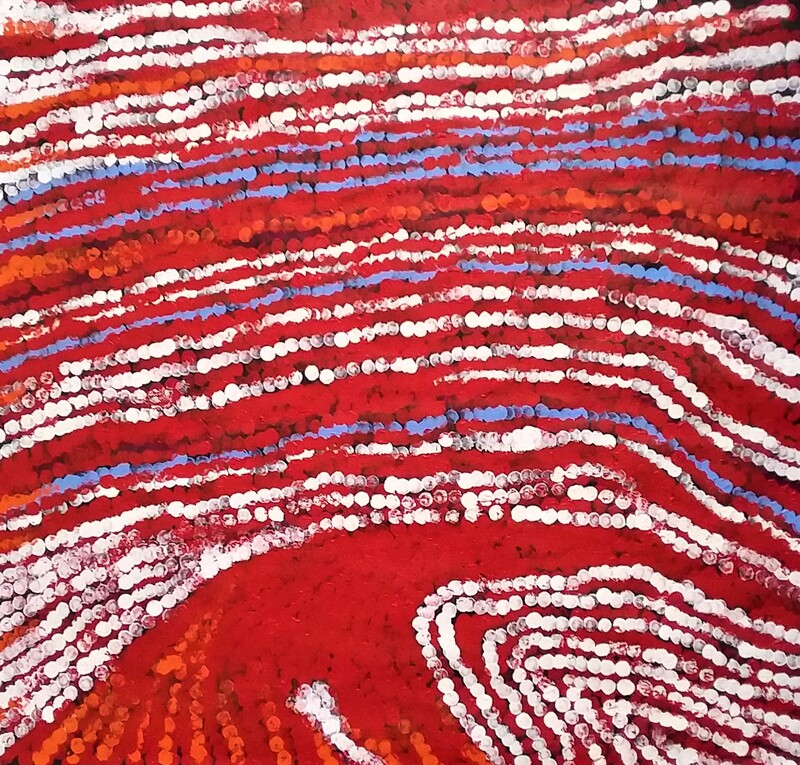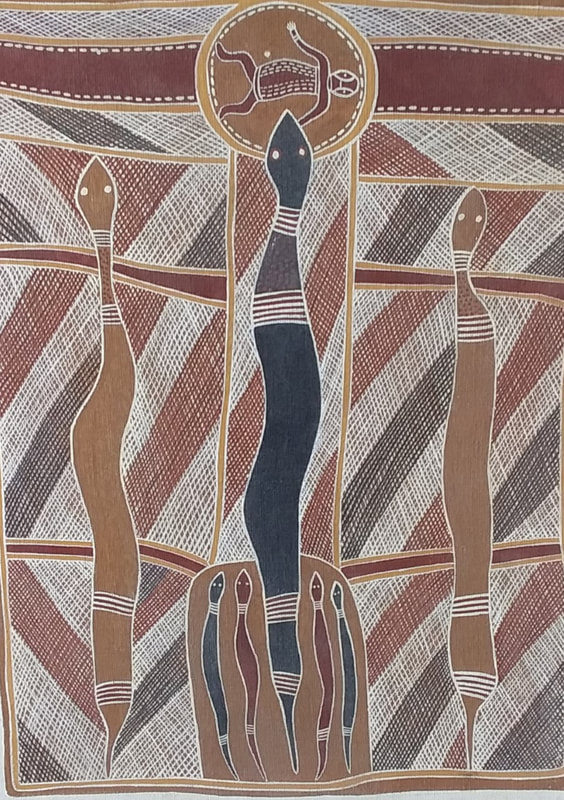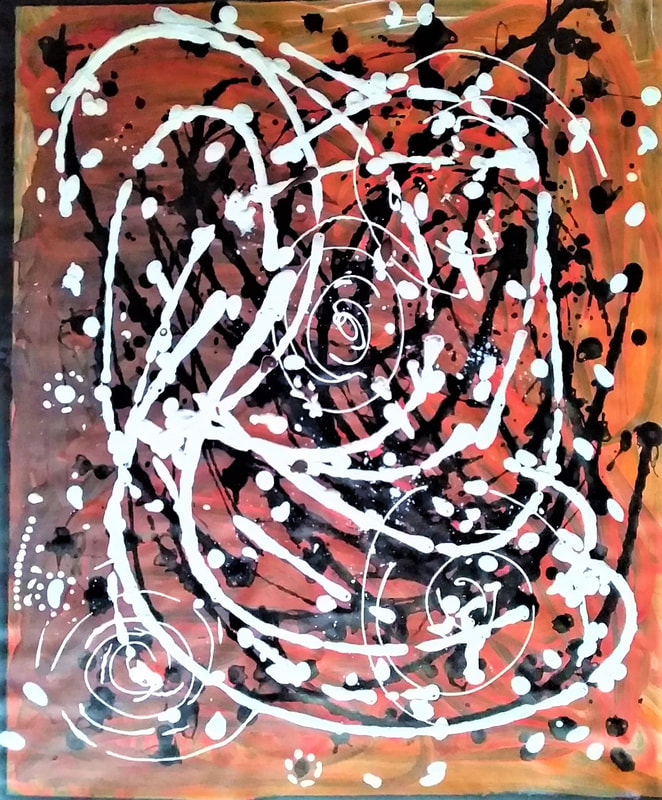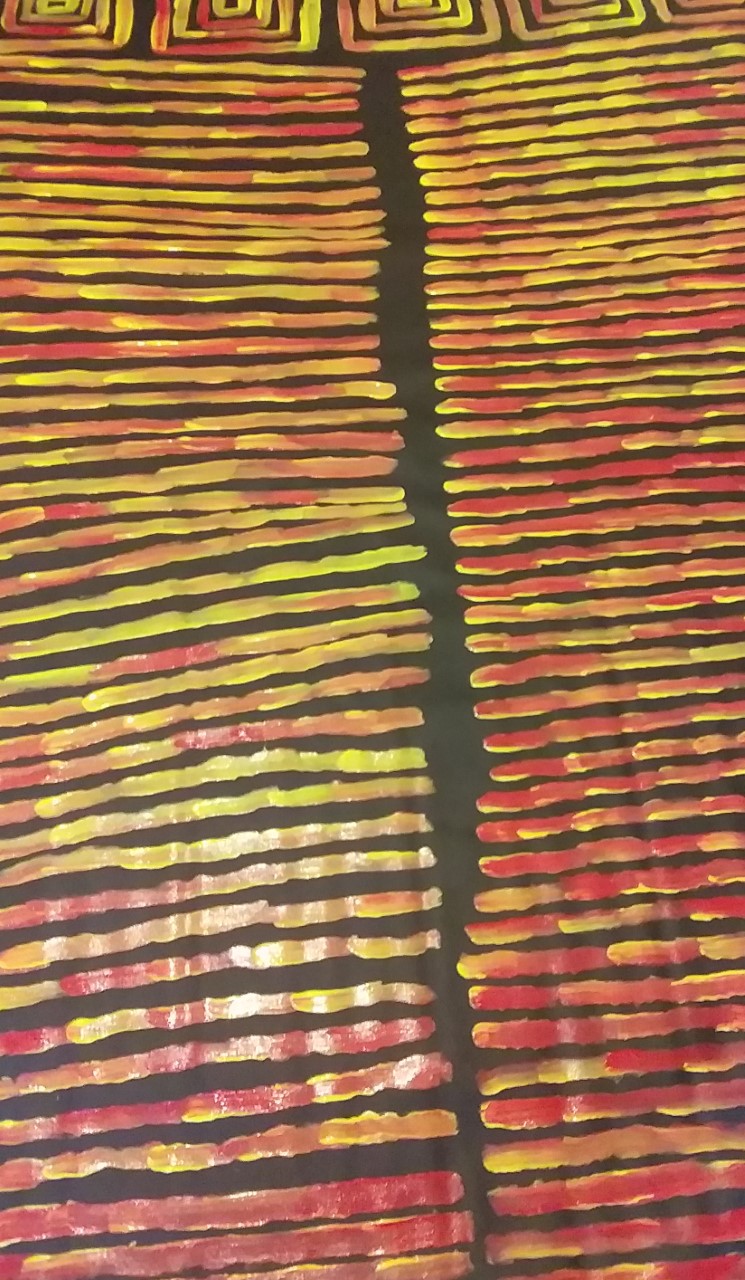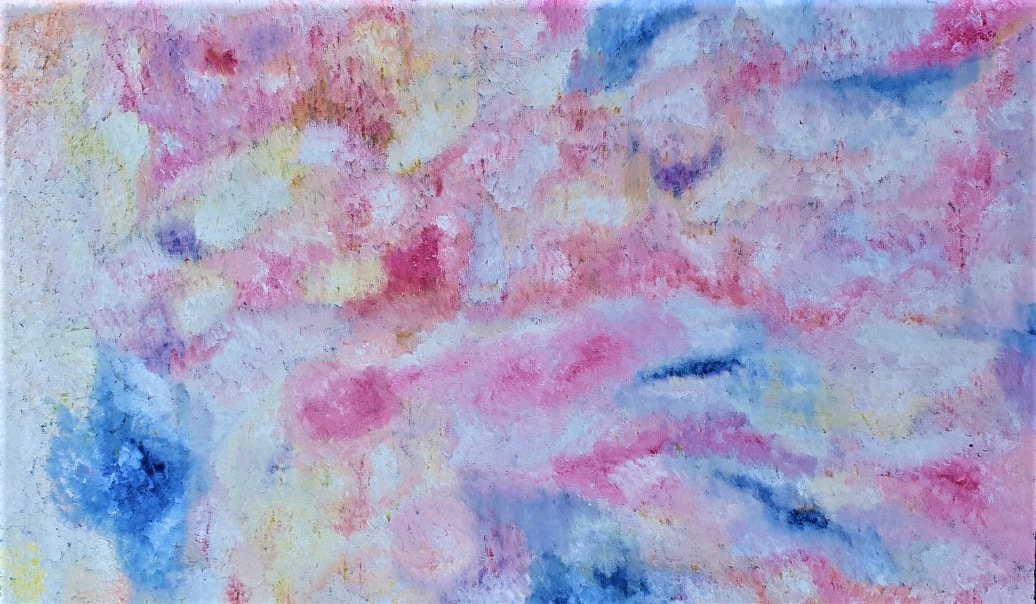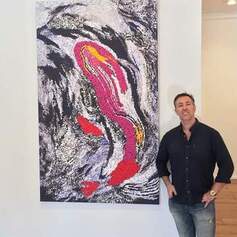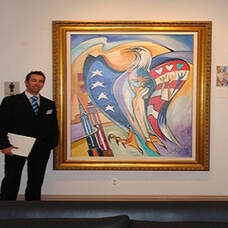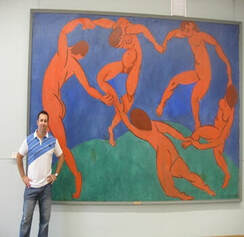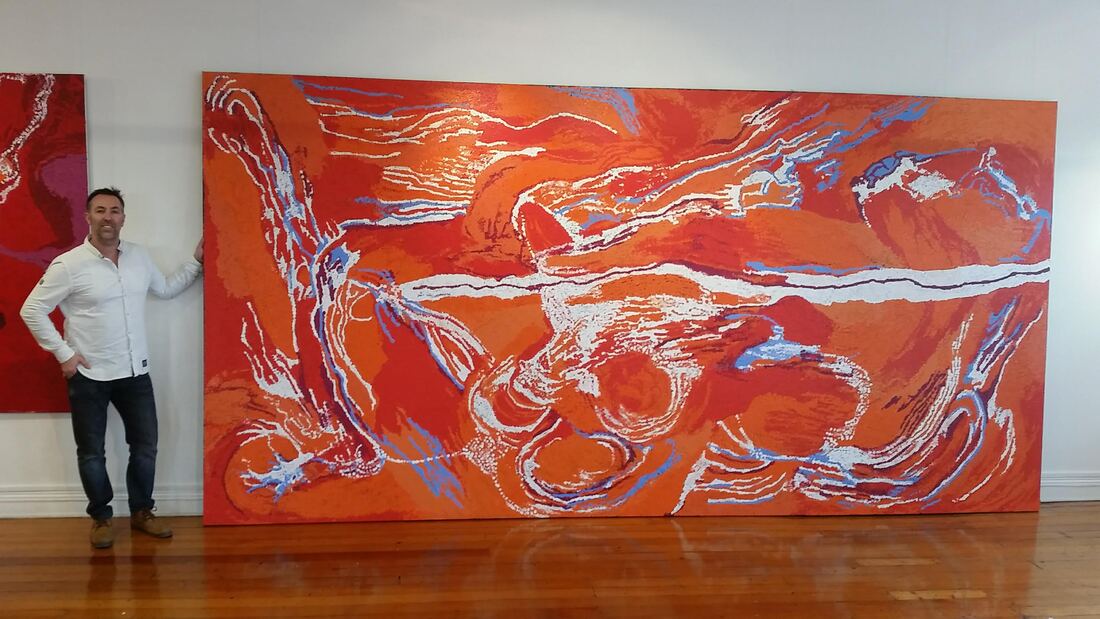Expert Appraisals for your Aboriginal Art
|
Would you like to know how much your artwork is worth in todays art market ?
We can value your artwork for resale, insurance or as part of your self managed super fund. Daniel Goldshaft Valuations provide expert valuations for your Australian Aboriginal and non - Indigenous artworks. How does it work? An initial chat over the phone is helpful to gauge exactly what your needs are so please include your contact number in your email to us. We then view your artworks either in person or via emailed pictures. You will then receive a clear and detailed supporting document outlining the required relevant facts. The current value of your artworks will be included in an easy to read format. See FAQs or call us for more information regarding the most commonly asked questions we receive from clients. The benefits of having your art valued.
1. Understanding the worth: Getting your Aboriginal artwork valued provides insight into its monetary value, helping you recognize its worth in the market. 2. Authenticity verification: Valuation often involves authentication processes, ensuring your artwork's legitimacy and preserving its cultural heritage. 3. Investment potential: Knowing the value of your Aboriginal artwork can guide investment decisions, potentially leading to profitable opportunities in the future. 4. Insurance purposes: Valuation assists in accurately insuring your artwork, safeguarding it against potential damage, loss, or theft. 5. Legacy preservation: Documenting the value of your Aboriginal artwork contributes to its legacy, aiding in its preservation for future generations to appreciate and cherish. Why do I need a valuation?
Aboriginal Art Valuation Process |
|
To get started - send the below information to [email protected]
- Good picture of the front of the artwork
- Good picture of the back of the artwork
- Artist name (if known) & size of artwork
- Include the certificate of authenticity (if available)
VALUATIONS - pricing starts at $220.00 You will receive a digital copy of your valuation via email and a copy via the post.
*Prices may vary depending on your individual needs. This can be discussed at the time of your enquiry. Multiple artworks will be priced as a group package.
*Prices may vary depending on your individual needs. This can be discussed at the time of your enquiry. Multiple artworks will be priced as a group package.
What is Aboriginal Art
Aboriginal artists use dots and lines as a type of language to connect to their dreamtime stories.
Originally over dotting was used to cover up their sacred totems and symbols , however these simple ritualistic artworks are very complex in their true meaning.
In 1971 ,approximately 1000 artworks were produced in Papunya Tula with Geoffrey Bardon the young school teacher stationed in the community. Artists such as Clifford Possum Tjapaltjarri, Ronnie Tjampitjinpa and Johnny Warangkula Tjupurrula were some of the pioneers of the movement.
As a result, the world came to know Australian Aboriginal art and an international spotlight was shone on our shores.
The artists became more confident in their abilities, as galleries in Alice Springs started to show interest in their paintings and dealers offered the artists paint and canvas to create their stories and sell to the tourists travelling through the Red Centre.
The last 5 years has been a huge turning point in the Aboriginal artworld with the gallery sale of Yannima Tommy Watson's seminal painting featured in The Australian newspaper and then the spotlight has shone again on the Gagosian gallery's incredible exhibition highlighting some of Steve Martins Indigenous collection. Featured artists were the big hitters, Emily Kame Kngwarreye, Warlimpirrnga Tjapaltjarri of the last nomads and George Hairbrush Tjungurrayi with his Tingari stories. Lets not forget Bill Whiskey Tjapaltjarri, Makinti Napanangka and Naata Nungurrayi.
As a valuer I see many artworks that are looking for new homes. Please let me know if you are looking to collect as well as having your artwork valued. My access to stellar artworks is vast and varied.
Originally over dotting was used to cover up their sacred totems and symbols , however these simple ritualistic artworks are very complex in their true meaning.
In 1971 ,approximately 1000 artworks were produced in Papunya Tula with Geoffrey Bardon the young school teacher stationed in the community. Artists such as Clifford Possum Tjapaltjarri, Ronnie Tjampitjinpa and Johnny Warangkula Tjupurrula were some of the pioneers of the movement.
As a result, the world came to know Australian Aboriginal art and an international spotlight was shone on our shores.
The artists became more confident in their abilities, as galleries in Alice Springs started to show interest in their paintings and dealers offered the artists paint and canvas to create their stories and sell to the tourists travelling through the Red Centre.
The last 5 years has been a huge turning point in the Aboriginal artworld with the gallery sale of Yannima Tommy Watson's seminal painting featured in The Australian newspaper and then the spotlight has shone again on the Gagosian gallery's incredible exhibition highlighting some of Steve Martins Indigenous collection. Featured artists were the big hitters, Emily Kame Kngwarreye, Warlimpirrnga Tjapaltjarri of the last nomads and George Hairbrush Tjungurrayi with his Tingari stories. Lets not forget Bill Whiskey Tjapaltjarri, Makinti Napanangka and Naata Nungurrayi.
As a valuer I see many artworks that are looking for new homes. Please let me know if you are looking to collect as well as having your artwork valued. My access to stellar artworks is vast and varied.
Where can I sell my artwork?
.There will be many deciding factors such as to who and where you can sell your artwork. We may be able to assist in recommending some avenues to resell your artwork.
Australian Artwork Market
About Market Conditions :-
Artworks are traded within various markets. Art valuations may vary depending on the market and will reflect this.
Auction market, primary market – gallery, secondary market - gallery, private sales by independent consultants, Internet and large /small galleries – each market condition will have its own set of market operating parameters.
Auction reserve - The minimum hammer price achievable in an ideal auction market, if a time limit is not involved .
This figure does not reflect the sellers premiums or commissions which can differ substantially within various auction houses, clients and areas.
Forced sale - The price expected when an artwork has to be sold in a short time frame, potentially non-ideal market conditions.
Retail replacement - Given as the average estimated replacement cost for an artwork bought at a retail level in the market place, particular to the document. The value will differ depending on origin of the artwork purchased.
Fair market valuation - The average estimated resale value taken between the auction reserve and the retail replacement value of the artwork. Similar to the non forced sale amount.
Non forced sale - An estimate of a reasonable second-hand price between a willing buyer and seller within a fair or specialized market without time limitations.
Artworks are traded within various markets. Art valuations may vary depending on the market and will reflect this.
Auction market, primary market – gallery, secondary market - gallery, private sales by independent consultants, Internet and large /small galleries – each market condition will have its own set of market operating parameters.
Auction reserve - The minimum hammer price achievable in an ideal auction market, if a time limit is not involved .
This figure does not reflect the sellers premiums or commissions which can differ substantially within various auction houses, clients and areas.
Forced sale - The price expected when an artwork has to be sold in a short time frame, potentially non-ideal market conditions.
Retail replacement - Given as the average estimated replacement cost for an artwork bought at a retail level in the market place, particular to the document. The value will differ depending on origin of the artwork purchased.
Fair market valuation - The average estimated resale value taken between the auction reserve and the retail replacement value of the artwork. Similar to the non forced sale amount.
Non forced sale - An estimate of a reasonable second-hand price between a willing buyer and seller within a fair or specialized market without time limitations.
Artwork Valuation Purposes
Private sale - The purpose for a valuation for private sale is to provide the client with an estimate of value where the artwork is to be offered for resale within a commercial retail market dealing gallery, an auction sale room or is traded between two parties in a market other than the prior markets.
Insurance replacement - The purpose of an insurance replacement valuation is to provide the client and the insurance company with all correct details of technical and descriptive information to allow both parties to reach an agreement for insurance coverage.
These valuations are the most common valuations provided.
Insurance replacement is usually defined as what someone would expect to be charged to replace a commercially equivalent artwork from a reputable outlet within the market specified on the document.
Divorce settlement or Estate division - The purpose for this valuation is to provide all technical details and value to allow division of assets for parties involved.
These valuations may reflect specific instructions from the legal community and will sometimes reflect a range of market levels for comparison.
Probate - This valuation was used in the past to provide information for the determination of government taxes and charges payable on a deceased estate as death duties.
The probate commissioners definition was 'an immediate sale to a willing but not anxious buyer. It represents the lowest value applicable usually by forced sale.
It is now more common for probate to be used for estate division as there are presently no probate taxes.
*Daniel Goldshaft Valuations does not promise to buy / resell or guarantee the sale of your artwork for you or on behalf of another party.
There may be a variety of possible prices depending on what market the artwork is being sold in.
We never guarantee an increase in the value of your artwork.
We reserve the right to discontinue the valuation before completion at our discretion in which case a refund will be provided.
Insurance replacement - The purpose of an insurance replacement valuation is to provide the client and the insurance company with all correct details of technical and descriptive information to allow both parties to reach an agreement for insurance coverage.
These valuations are the most common valuations provided.
Insurance replacement is usually defined as what someone would expect to be charged to replace a commercially equivalent artwork from a reputable outlet within the market specified on the document.
Divorce settlement or Estate division - The purpose for this valuation is to provide all technical details and value to allow division of assets for parties involved.
These valuations may reflect specific instructions from the legal community and will sometimes reflect a range of market levels for comparison.
Probate - This valuation was used in the past to provide information for the determination of government taxes and charges payable on a deceased estate as death duties.
The probate commissioners definition was 'an immediate sale to a willing but not anxious buyer. It represents the lowest value applicable usually by forced sale.
It is now more common for probate to be used for estate division as there are presently no probate taxes.
*Daniel Goldshaft Valuations does not promise to buy / resell or guarantee the sale of your artwork for you or on behalf of another party.
There may be a variety of possible prices depending on what market the artwork is being sold in.
We never guarantee an increase in the value of your artwork.
We reserve the right to discontinue the valuation before completion at our discretion in which case a refund will be provided.
Registered Aboriginal Artwork Valuer
Fine Art Valuer Sydney, Australia
This website uses marketing and tracking technologies. Opting out of this will opt you out of all cookies, except for those needed to run the website. Note that some products may not work as well without tracking cookies.
Opt Out of Cookies|
Copyright © 2024 DGvaluations Sydney,Australia. All rights reserved.
|
